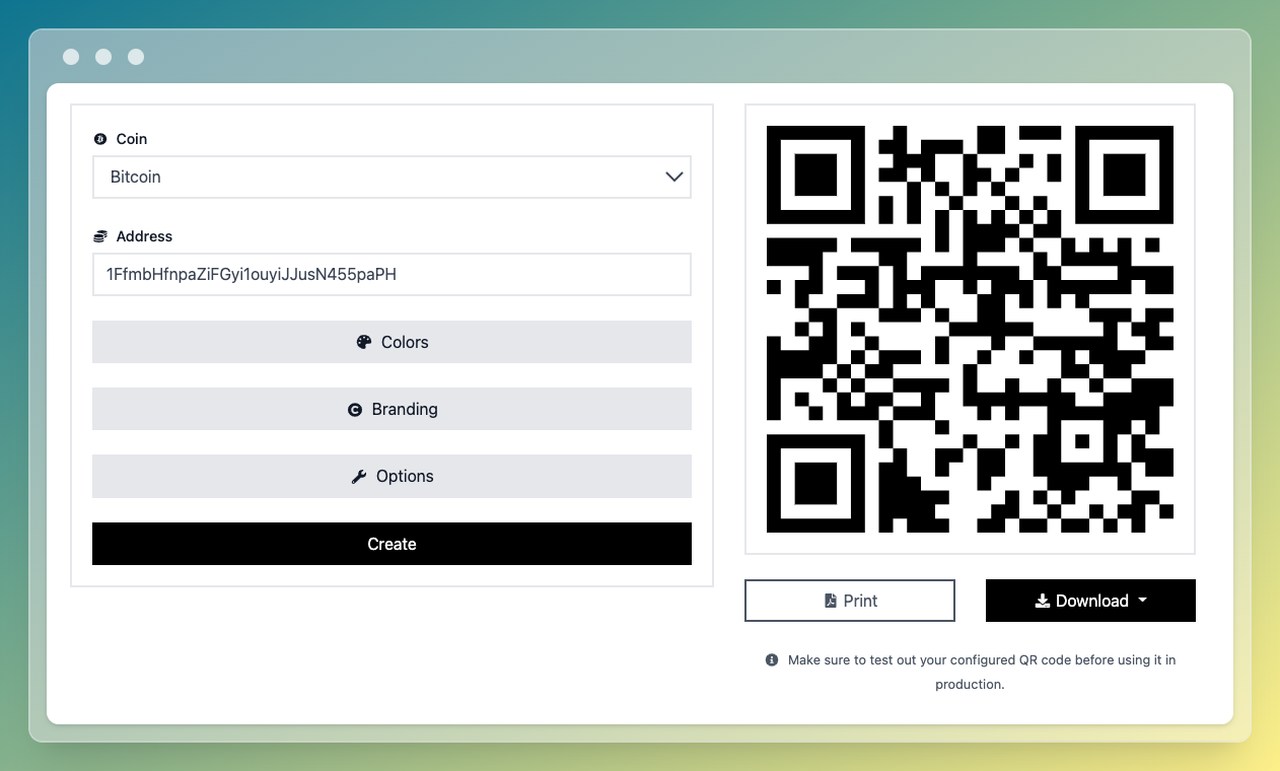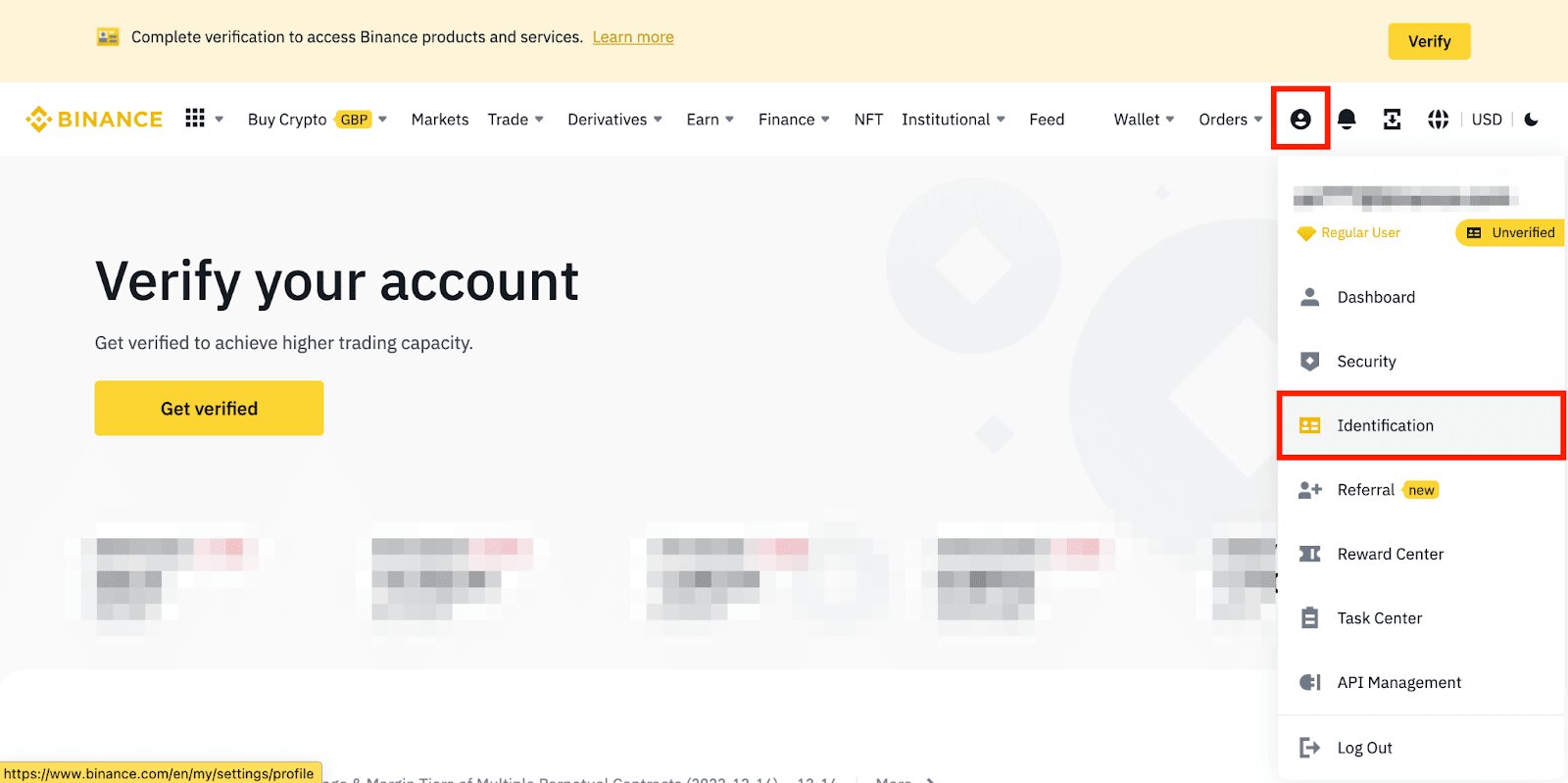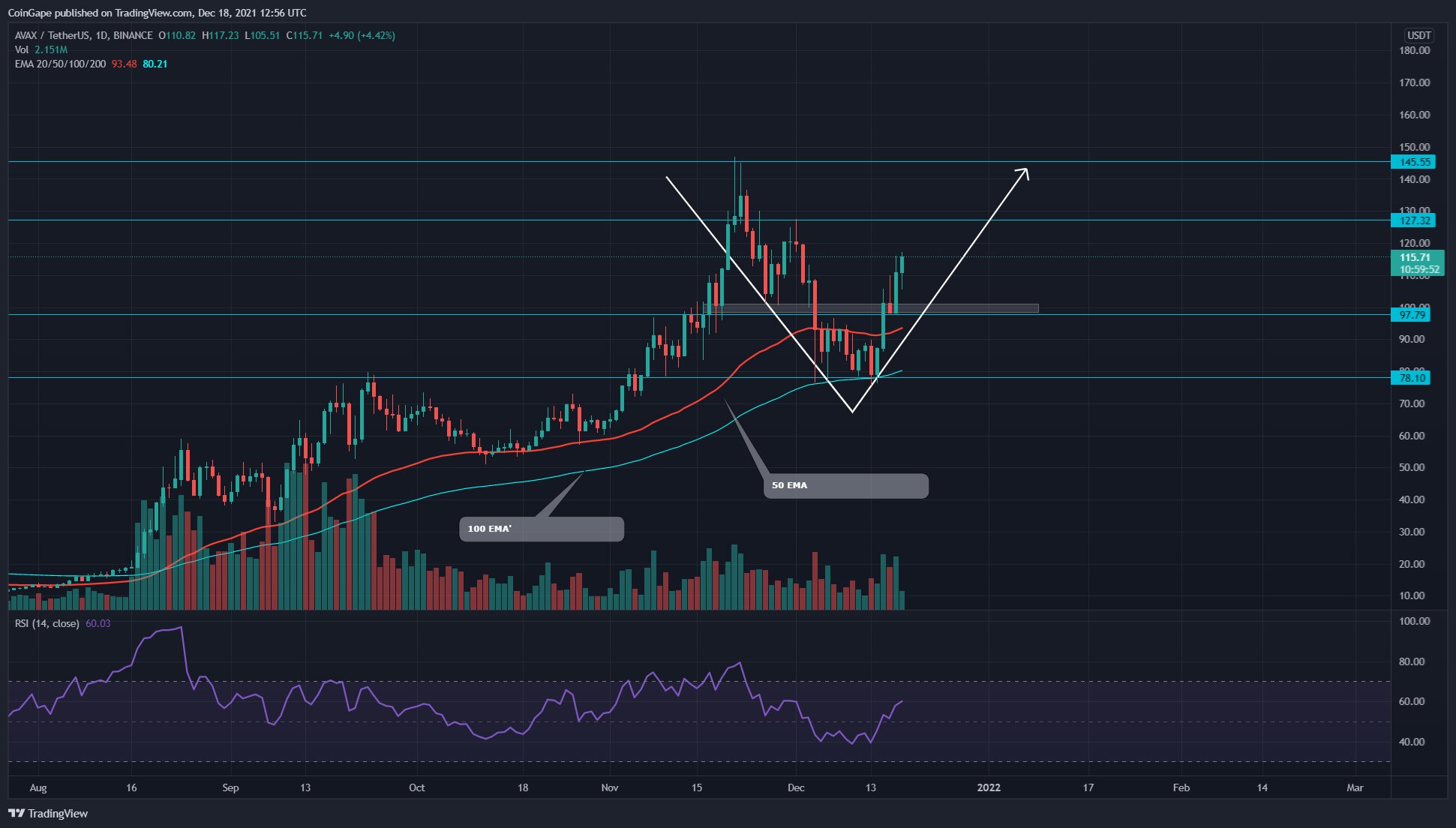Introduction
Cryptocurrency has become a global phenomenon, revolutionizing the way we transact and store value. At the heart of this digital revolution are crypto addresses, an essential component that enables secure and efficient transactions within the blockchain network. But what exactly is a crypto address?
A crypto address, also known as a public key or wallet address, plays a crucial role in the world of cryptocurrencies. It serves as a unique identifier that allows users to send, receive, and store digital assets such as Bitcoin, Ethereum, or any other supported cryptocurrency.
Understanding how crypto addresses work is fundamental for anyone seeking to navigate the crypto space. This article will delve into the basics of crypto addresses, exploring their purpose, anatomy, and various types. We will also discuss how to generate, import, and export these addresses. Additionally, we will touch upon the significance of public and private keys, as well as address formats in different cryptocurrencies. Finally, we will address important security considerations to protect your crypto assets.
By the end of this article, you will have a solid understanding of crypto addresses and be equipped with the knowledge to safely and confidently interact in the world of cryptocurrencies.
The Basics of Crypto Addresses
At its core, a crypto address is a unique alphanumeric string that represents a destination or source for cryptocurrency transactions. It serves as a digital identifier for individuals or entities within the blockchain network.
A crypto address is derived from an individual’s public key, which is a randomly generated combination of numbers and letters. While the public key is used to generate a crypto address, it is important to note that the public key itself cannot be used to access the funds associated with that address.
Crypto addresses are primarily used to receive funds, similar to how a bank account number is used for receiving money. However, they can also be used to send funds by inputting the recipient’s crypto address in the sending wallet’s transaction details.
It’s essential to remember that each cryptocurrency has its own unique address format. For example, Bitcoin addresses start with a “1” or “3,” while Ethereum addresses begin with “0x.” This differentiation allows for the secure and accurate identification of the intended cryptocurrency when conducting transactions.
One important aspect of crypto addresses to understand is that they are case-sensitive. This means that even a slight change in the letter casing could result in sending funds to the wrong address or losing access to your own funds. Thus, it’s crucial to double-check and validate the address before initiating any transaction.
It is also worth mentioning that crypto addresses can be reused for receiving multiple transactions. However, some privacy-conscious individuals or entities prefer to generate a new address for each transaction to maintain anonymity.
In summary, crypto addresses are unique alphanumeric strings derived from public keys that serve as digital identifiers within the blockchain network. They are used to receive and send cryptocurrency transactions and have different formats based on the specific cryptocurrency being used. Understanding the basics of crypto addresses will help users navigate the world of cryptocurrencies with confidence and security.
The Purpose of a Crypto Address
The primary purpose of a crypto address is to facilitate secure and efficient transactions within the blockchain network. Crypto addresses act as a digital destination or source for cryptocurrency transfers, serving as a unique identifier for individuals or entities.
One of the most significant advantages of using crypto addresses is the ability to send and receive funds globally, without relying on traditional banking intermediaries. Unlike traditional financial systems, which often involve high fees, delays, and restrictions, crypto addresses enable near-instantaneous transfers with minimal transaction costs.
Crypto addresses also promote transparency and accountability within the blockchain ecosystem. Every transaction made using a crypto address is recorded on the blockchain, creating an immutable and publicly accessible ledger. This transparency enhances trust and ensures that all transactions can be verified by network participants.
Furthermore, crypto addresses enable individuals to have complete control over their funds. Unlike traditional banking systems where banks hold custody of your assets, crypto addresses allow users to be their own bank. This decentralization empowers individuals to manage and safeguard their assets independently, without the need for intermediaries.
In addition to facilitating regular transactions, crypto addresses are also used for various other purposes. For instance, they enable individuals to receive donations, payments, or salaries in cryptocurrencies. Many online businesses, freelancers, and content creators utilize crypto addresses to accept digital assets as payment for goods or services.
Moreover, crypto addresses can serve as a means of identity verification within the blockchain network. Since each address is unique and associated with a particular individual or entity, it can be used as proof of ownership or participation in certain blockchain-based systems.
Overall, the purpose of a crypto address is to provide a secure, transparent, and efficient method for conducting transactions within the blockchain network. By using crypto addresses, individuals can enjoy the benefits of decentralized finance, global accessibility, and complete control over their funds.
Anatomy of a Crypto Address
To understand the structure and components of a crypto address, let’s examine the anatomy of a typical crypto address. Although the specific details may vary depending on the cryptocurrency, the fundamental elements are generally similar.
A crypto address consists of a combination of letters, numbers, and symbols. The length of the address can vary as well, usually ranging from 26 to 35 characters. It is important to note that the address is case-sensitive, meaning that even a slight change in letter casing can result in an invalid address.
The most common representation format for a crypto address is the Base58 encoding, which is a modified version of the Base64 encoding, specifically designed to avoid confusion between visually similar characters.
Let’s break down the key components of a crypto address:
- Prefix: The address may start with a prefix that provides information about the cryptocurrency being used. For example, Bitcoin addresses typically start with a “1” or “3,” while Ethereum addresses begin with “0x.”
- Checksum: A checksum is usually added to the address to ensure its accuracy and prevent typing errors. The checksum is a mathematical calculation that helps detect and correct errors when entering the address. It allows users to validate the address and confirm its integrity.
- Public Key Hash: The public key hash is a cryptographic representation of the public key associated with the address. It is derived from the public key using a hashing algorithm. The public key hash helps verify the authenticity and integrity of the address.
When these components are combined, they create the unique identifier known as the crypto address. This address is what you provide to others when you want to receive funds.
It’s crucial to ensure the accuracy of the entire address, as any mistake or omission could lead to the loss of funds. To minimize the risk of error, many wallets provide QR codes for users to scan when sharing or receiving crypto addresses.
Understanding the anatomy of a crypto address allows users to verify the authenticity of addresses and ensure secure transactions. But it’s important to note that the address alone does not provide access to the associated funds. To access and manage the funds, users need the corresponding private key, which we will explore in the next sections.
Types of Crypto Addresses
Within the crypto world, there are various types of addresses that serve different purposes and cater to different cryptocurrencies. Let’s explore some of the common types of crypto addresses:
- Single-use Addresses: These addresses are generated for a specific transaction and are intended for one-time use. Once the transaction is completed, the address is typically not used again. Single-use addresses offer increased privacy and security by avoiding address reuse, reducing the risk of tracking and linking multiple transactions to the same address.
- Multi-use Addresses: As the name suggests, multi-use addresses can be reused for multiple transactions. They are often used for convenience when receiving funds on a regular basis. While multi-use addresses may reduce privacy to some extent, they are still secure as long as the private key remains undisclosed.
- Exchange Deposit Addresses: Cryptocurrency exchanges provide unique deposit addresses for each user account. These addresses are specifically generated to receive funds from external wallets or other exchange users. Users who wish to deposit funds into their exchange accounts must send the funds to their respective exchange deposit addresses.
- Payment Protocol Addresses: Some cryptocurrencies, like Bitcoin, utilize payment protocols that enhance the security and user experience of transactions. Payment protocol addresses are an upgraded version of standard addresses, offering additional features such as refund capabilities and enhanced transaction information. Payment protocol addresses often start with “bitcoincash:” or “bitcoin:”.
Each type of crypto address fulfills a particular purpose and provides unique features. It’s important for users to understand the different types of addresses and choose the most appropriate one for their specific needs.
Generating a Crypto Address
To start transacting in cryptocurrencies, one of the first steps is to generate a crypto address. The process of generating a crypto address varies depending on the cryptocurrency and the wallet being used. Here are the general steps involved:
- Choose a Wallet: The first step is to select a wallet that supports the cryptocurrency in which you want to generate an address. Wallets come in various forms, including software wallets for desktop and mobile devices, hardware wallets for enhanced security, and online web wallets.
- Create a Wallet: Once you have chosen a suitable wallet, you will need to create an account or set up a new wallet. This typically involves creating a secure password or passphrase to protect your wallet and its associated private keys.
- Access the Address: After setting up the wallet, you can access the receiving address associated with your account. Depending on the wallet, you may find the address under a “Receive” or “Deposit” section.
- Generate the Address: In most wallets, the generation of a crypto address is an automated process. Simply click on the “Generate” or “Get New Address” button, and the wallet will provide you with a unique address for receiving funds.
- Copy and Share: Once the address is generated, it will be displayed as a string of characters. You can copy the address, either by manually selecting and copying the text or using the provided “Copy” button. Ensure that you share the address in a secure and reliable manner.
It is important to note that each time you generate a new address, it is completely independent of any previously generated addresses. This means that you can have multiple addresses within the same wallet and use them for different purposes, enhancing privacy and security.
Generating a crypto address is a straightforward process, thanks to the user-friendly interfaces of modern wallets. However, it is crucial to ensure that you are using a trusted and reputable wallet from a reliable source to safeguard your funds and information.
By following these steps, you can successfully generate a crypto address and embark on your journey of sending and receiving cryptocurrencies.
Importing and Exporting Crypto Addresses
Importing and exporting crypto addresses allows users to access their cryptocurrency funds from different wallets or devices. This feature enables seamless transitions between wallets and provides flexibility and convenience in managing one’s digital assets. Here’s a closer look at the process of importing and exporting crypto addresses:
Importing Crypto Addresses:
To import a crypto address, you typically need the associated private key or seed phrase. Here are the general steps involved in importing a crypto address:
- Choose a Wallet: Select a wallet that supports the ability to import addresses. Ensure that the wallet is compatible with the cryptocurrency associated with the address you want to import.
- Access the Wallet’s Import Function: Navigate to the wallet’s settings or options and look for the “Import” or “Restore” feature. This action will usually prompt you to enter either the private key or the seed phrase.
- Enter the Private Key or Seed Phrase: Carefully input the private key or seed phrase associated with the desired crypto address. Be cautious when entering this information, as any mistakes could result in the loss of funds.
- Complete the Import: Once the private key or seed phrase is entered correctly, the wallet will initiate the import process. It will scan the blockchain and import the address, allowing you to access and manage the associated funds within the wallet.
Exporting Crypto Addresses:
Exporting a crypto address involves retrieving the private key or seed phrase from a wallet to use it with a different wallet or storage method. The process generally requires the following steps:
- Locate the Export Option: Find the “Export” or “Backup” feature within the wallet you are using. This option may be available in the wallet’s settings or in a specific section dedicated to address management.
- Choose the Export Method: Select the desired export method. Wallets commonly offer the option to export the private key as a file, display it as plain text, or generate a QR code. Choose the method that suits your needs and preferences.
- Safeguard the Exported Data: Once you export the private key or seed phrase, it is crucial to ensure its safekeeping. Store the exported data securely, preferably offline in multiple physical locations, to prevent unauthorized access or accidental loss.
Importing and exporting crypto addresses can be useful in scenarios such as transitioning to a new wallet, accessing funds from different devices, or creating secure backups for disaster recovery purposes. However, it is essential to exercise caution when handling private keys or seed phrases, as they grant access to your cryptocurrency funds.
By gaining familiarity with the process of importing and exporting crypto addresses, users can enjoy the flexibility and control necessary for managing their digital assets effectively.
The Significance of Public and Private Keys
Public and private keys are essential components of cryptocurrency addresses and play a crucial role in securing and managing digital assets. Understanding their significance is vital for maintaining the integrity and privacy of your cryptocurrency holdings. Let’s explore the significance of public and private keys:
Public Key:
A public key is an alphanumeric string derived from a mathematical operation on a private key. It serves as the foundation for generating a crypto address. The public key is safe to share with others and is used by senders to verify the authenticity of the recipient’s address when initiating a transaction.
While the public key is derived from the private key, it cannot be used to reverse-engineer or determine the original private key. This property ensures that the private key remains secure even if the public key is known.
Private Key:
The private key is a randomly generated, unique string of numbers and letters. It is the secret key that provides access to the funds associated with a particular crypto address. The private key must remain confidential and should only be known to the owner.
With the private key, users can digitally sign transactions to prove ownership and authorize the transfer of funds. It is crucial to keep the private key secure, as any compromise could lead to unauthorized access and loss of funds.
Significance:
The significance of public and private keys lies in their ability to provide secure and verifiable transactions within the blockchain network:
- Security: The private key ensures that only the legitimate owner can access and control the funds associated with a crypto address. It serves as a digital signature to authenticate transactions and grants the right to transfer funds.
- Privacy: Public and private keys enable participants to transact without revealing personal information. The public key allows others to verify transactions without the need for personal identification, enhancing privacy in the blockchain ecosystem.
- Integrity: Public and private keys ensure the integrity of transactions. The digital signature created by the private key guarantees that the transaction has not been altered or tampered with during transmission.
- Decentralization: Public and private keys enable individuals to have complete control and ownership of their funds. They eliminate the need for intermediaries, such as banks, providing a decentralized financial system.
Understanding the significance of public and private keys empowers individuals to control their cryptocurrency holdings securely. Keeping the private key confidential and implementing best practices for key management are essential to safeguarding your digital assets.
Address Formats in Different Cryptocurrencies
Each cryptocurrency has its unique address format, which is necessary for ensuring the accurate identification and secure transfer of funds within the respective blockchain network. Let’s explore some of the most common address formats used in different cryptocurrencies:
Bitcoin (BTC):
Bitcoin addresses typically start with either a “1” or “3” and consist of alphanumeric characters. These addresses are encoded using Base58, which eliminates similar-looking characters to enhance readability and reduce the chances of mistakes during manual entry.
Ethereum (ETH):
Ethereum addresses start with the prefix “0x” and are followed by a combination of alphanumeric characters. These addresses are 40 characters long and are encoded in hexadecimal format.
Bitcoin Cash (BCH):
Bitcoin Cash addresses are similar to Bitcoin addresses and can start with either a “1” or “3. However, to differentiate them from Bitcoin addresses, some Bitcoin Cash addresses may start with “bitcoincash:” or “bitcoin:” followed by the alphanumeric characters.
Litecoin (LTC):
Litecoin addresses are similar to Bitcoin addresses and typically begin with an “L” or “3”. These addresses can consist of alphanumeric characters.
Ripple (XRP):
Ripple addresses, also known as XRP Ledger addresses, start with the letter “r” followed by a combination of alphanumeric characters. They can be from 25 to 35 characters long and are encoded in Base58 with a checksum.
Cardano (ADA):
Cardano addresses start with the letter “A” and are followed by a combination of alphanumeric characters. These addresses are encoded in Bech32 format.
Stellar (XLM):
Stellar addresses begin with the letter “G” and are followed by a combination of alphanumeric characters. The addresses can be up to 56 characters long and are encoded in Base32 format.
These are just a few examples of the various address formats used in different cryptocurrencies. It’s essential to familiarize yourself with the specific address format corresponding to the cryptocurrency you are working with to ensure accuracy when sending or receiving funds.
It’s worth noting that some wallets, exchanges, or payment processors may support multiple cryptocurrencies and provide a unified address format. This can simplify the process for users who hold multiple cryptocurrencies, as they can use a single address format for different currencies within the same ecosystem.
By understanding the address formats in different cryptocurrencies, users can confidently transact and ensure that their funds are directed to the correct destinations on the respective blockchain networks.
Security Considerations for Crypto Addresses
When it comes to cryptocurrency addresses, ensuring the security of your funds is of paramount importance. Here are some crucial security considerations to keep in mind:
Be Mindful of Phishing Attacks:
Phishing attacks involve malicious actors attempting to deceive users into revealing their private keys or seed phrases. Stay vigilant and be cautious of any unsolicited requests for your crypto address information. Always double-check the legitimacy of the source before sharing any sensitive information.
Double-Check Address Accuracy:
When sending or receiving funds, always double-check the accuracy of the crypto address. Even a minor mistake can result in the loss of funds, as transactions on the blockchain are irreversible. Utilize QR codes whenever possible to minimize the likelihood of manual entry errors.
Use Hardware Wallets:
Hardware wallets offer an added layer of security by keeping your private keys offline and protected from potential online threats. Consider using a hardware wallet to store your crypto addresses and securely sign transactions.
Implement Two-Factor Authentication (2FA):
Enable two-factor authentication whenever possible to add an extra layer of security to your accounts. With 2FA, even if someone gains unauthorized access to your password, they would still need the secondary authentication method, such as a code sent to your mobile device, to access your crypto addresses.
Regularly Update Software:
Ensure that you are using the latest version of your wallet software to take advantage of the most up-to-date security features and bug fixes. Keep your operating system and antivirus software updated to protect against potential vulnerabilities.
Secure Storage and Backup:
Backup your wallet regularly, including the private keys or seed phrases associated with your crypto addresses. Store these backups in secure, offline locations, such as encrypted USB drives or offline hardware wallets. Implement proper password management for your backups to prevent unauthorized access.
Beware of Social Engineering:
Be cautious of social engineering attacks aimed at persuading or manipulating you into revealing your private keys or seed phrases. Do not share this information with anyone who claims to be a support representative or a trusted individual unless you have independently verified their authenticity.
Stay Informed:
Stay updated with the latest security practices and news within the cryptocurrency community. Follow reputable sources and engage with the crypto community to learn from their experiences and adopt best practices.
By incorporating these security considerations into your crypto address management, you can significantly enhance the protection of your digital assets and reduce the risk of falling victim to security threats.
Conclusion
Crypto addresses are an integral part of the cryptocurrency ecosystem, allowing individuals and entities to send, receive, and store digital assets securely. Understanding the basics, generating, importing, exporting, and securing your crypto addresses are crucial steps in navigating the world of cryptocurrencies.
By grasping the basics of crypto addresses, including their purpose and anatomy, individuals gain a solid foundation for participating in the blockchain network. The significance of public and private keys becomes evident, as they provide the necessary security and control over digital assets.
Address formats vary across different cryptocurrencies, requiring users to familiarize themselves with the specific formats associated with the cryptocurrencies they use. Whether it’s Bitcoin, Ethereum, Litecoin, or any other cryptocurrency, accuracy in addressing is essential to ensure successful transactions.
Ensuring the security of your crypto addresses is paramount. By practicing caution, being aware of phishing attacks, double-checking address accuracy, utilizing hardware wallets, implementing two-factor authentication, and regularly updating software, individuals can significantly reduce the risk of unauthorized access and potential loss of funds.
Staying informed about the latest security practices and being proactive in learning from the crypto community helps develop a strong security mindset. By adopting and implementing the best security practices, individuals can safeguard their crypto addresses and maintain control over their digital assets.
In conclusion, crypto addresses are the backbone of the decentralized digital currency revolution. Understanding their fundamentals, securing them diligently, and being mindful of potential security risks are essential steps for anyone looking to confidently enter and thrive in the world of cryptocurrencies.

























